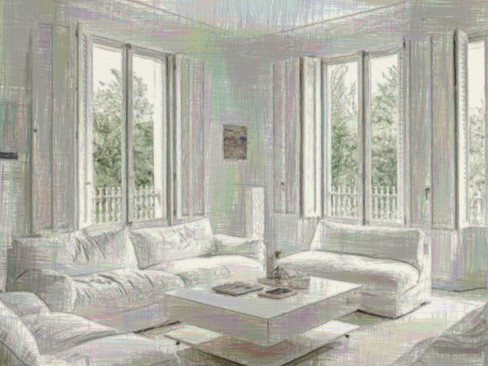Colour and the Theory of Everything: Is It Possible?
- Andreea Hartea
- Mar 12
- 3 min read
Updated: Mar 17
Colour is both a delight and a challenge. Especially when there’s no "Theory of Everything" to bridge the gap between its objective meaning and our personal experience.
Just as we are far from a unified theory in physics, we face the same challenge in understanding colour.
Recent studies, such as “What Does Your Favorite Color Say About Your Personality? Not Much” and “What Emotions Do Colors Represent?” by researchers Domicele Jonauskaite and Christine Mohr, dismantle long-held beliefs about colour psychology.
Their findings reveal that our favourite colour doesn’t define us as much as we might think. Nor can a specific colour truly represent a single emotion.

Take red, for instance. Loving red doesn’t automatically make you passionate or extroverted, just as seeing red doesn’t inherently evoke love. In nature, red can signify danger, like the warning colour of a poisonous mushroom, or ripeness, as with a perfectly ripe strawberry. In the animal kingdom, it can signal aggression or readiness for mating.
The meaning of colour is arbitrary. Whether in the natural or human-made world, we learn its symbolism through experience. If we’re lucky, we’re taught these meanings. Otherwise, we navigate them through trial and error, sometimes at our own peril. Think of a pedestrian who ignores a red traffic light.
Colour as a Cultural Construct
Colours carry centuries of history and tradition, embedding themselves in our collective unconscious. They become part of social etiquette, helping us communicate within a shared system of meaning.
At the same time, consumer culture constantly redefines colour trends. Every year, new palettes emerge, subtly reminding us that time is passing while fueling a cycle of planned obsolescence, one that is becoming less sustainable, both economically and ecologically.
Personal Connection: The True Meaning of Colour
But what happens when we strip away cultural influence, fashion trends, and even scientific analysis? What remains is the deeply personal question:
"How do I feel about this colour?"
Beyond theory, beyond trends, beyond collective meaning, what does this colour evoke when I wear it, when I drive a car in this shade when I sleep in a hotel room painted this hue, or when I see someone else wearing it?
Love? Boredom? Prejudice? Interest? Pride? Pleasure? Fear? Disgust? Shame? Admiration? Guilt? Sadness? Compassion?
Because ultimately, we interpret reality through the lens of our personal experiences. And colour is no exception.
The love we feel for a specific colour might stem from an unforgettable moment, perhaps someone we adored wore that shade. Conversely, a colour might trigger discomfort or even anxiety if we associate it with a traumatic event. A particular hue could even overwhelm us, much like the Stendhal Syndrome, an intense emotional reaction to art, simply because it subconsciously recalls a distressing memory.
Colour as an Emotional Trigger
Colors act as emotional triggers. They can bring back the most beautiful feelings we’ve ever experienced, making an image in a magazine captivate us. Or they can revive painful memories, causing us to instinctively reject a carefully designed interior, no matter how well it fits conventional aesthetic principles.
Colors are part of us. They speak a language only we can fully understand.
When it comes to colour, subjectivity outweighs objectivity. Personal experience overrules cultural meaning.
David vs. Goliath? Absolutely.
Especially when it comes to the spaces we live in, places that witness our daily lives, our failures, and our vulnerabilities. In these environments, we should feel at home, embraced and protected, not trapped in neutral, impersonal interiors that strip away our individuality.
The subjectivity of colour allows us to see the world through our own lens. It invites us to start from within, from our emotions, needs, and experiences.






















Comentarios